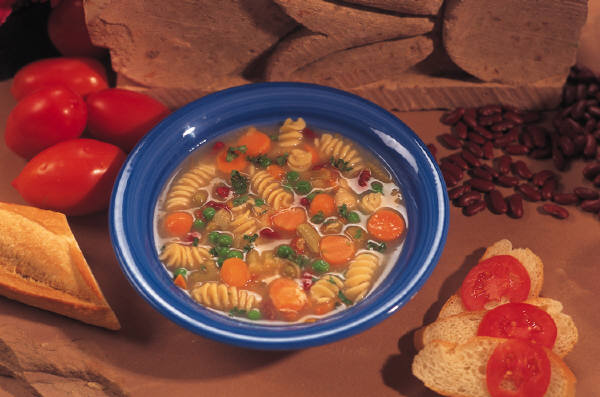What’s in Your Soup?
Today was one of the first really cold days of fall. The discussion in my office turned to soup – a lunchtime favorite for many.
“That  smells delicious . . . what is it and can you get me the recipe?”
smells delicious . . . what is it and can you get me the recipe?”
“I have this great recipe for butternut squash soup . . .”
“How long do you think I can keep this soup in my fridge?”
They are so lucky to have a food safety enforcer in the office! Let’s start at the beginning with the following suggestions to ensure a safe soup.
- Clean – start with a clean kitchen. Sanitize your counters and work surfaces before you get started. A simple sanitizing solution can be made with 1 teaspoon of bleach in 1 quart of water to sanitize.
- Separate – keep raw ingredients separate from those that will be cooked in the soup. You can use separate cutting boards, or wash, rinse, and sanitize your cutting board if you are using the same one. Sanitize the cutting board after you have cut ingredients that will be cooked and before you cut items that will be served raw, like fruits, vegetables, and bread items you also plan to have with the meal.
- Cook – Generally, soups that contain a meat based broth or cut/ground meat should be cooked to 165°. When reheating soup, bring it to a boil.
- Chill – Bacteria grows most rapidly at 70°F to 120°F, and our kitchens usually fall in that range, so leaving a soup out on the counter to cool is an unsafe idea. If you have a large quantity of soup left, divide it into smaller, shallow containers. For broth based soups, you can add ice cubes to quickly cool the soup. One of my favorite, most effective cooling methods, especially for thicker soups like chili, is to place the smaller containers in an ice bath and stir the soup. Place the containers in the refrigerator in a single layer (rather than stacking them) to aid in cooling.
- Storage – The USDA recommends discarding soups after 3-4 days in the refrigerator. For longer storage, the soup can be frozen and kept for 2-3 months.
With these tips, your soup will be safe to eat, share, and enjoy! Make your favorite recipe, or search for a new favorite at one of the links below:
American Heart Association Soup Recipes: http://www.heart.org/HEARTORG/GettingHealthy/NutritionCenter/HealthyCooking/Simple-Cooking-with-Heart-Soup-Recipes_UCM_458003_Article.jsp
University of Illinois Pumpkin Apple Soup: http://urbanext.illinois.edu/pumpkins/applesoup.cfm
USDA’s Food and Nutrition Service provides several collections including soups and other hearty recipes: http://www.whatscooking.fns.usda.gov/sites/default/files/featuredlinks/HarvestofRecipes.pdf
http://www.whatscooking.fns.usda.gov/sites/default/files/featuredlinks/cookbook-homes.pdf
Written by: Chris Kendle, Extension Educator, Family and Consumer Sciences, Ohio State University Extension, Tuscarawas County
Reviewed by: Melinda Hill, Extension Educator, Family and Consumer Sciences, Ohio State University Extension, Wayne County
Resources:
Partnership for Food Safety Education, www.fightbac.org
